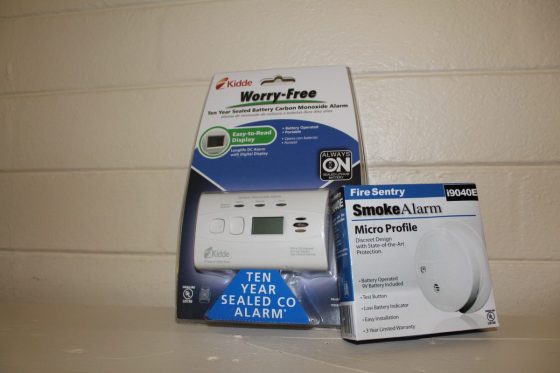A parent’s worst nightmare is if their child stops breathing. Although we hope and pray that we are never faced with this a situation like this, if we gain the knowledge of how to properly respond, we have the chance to save the life of our own child or the life of another. This post will go through the steps of how to perform CPR (cardiopulmonary resuscitation) on an infant. This is an invaluable tool that all parents and anyone that regularly provides care for your child should learn. Simply reading this information will increase the chances of saving a life if ever faced with the opportunity to perform CPR; however, it is still recommended that everyone take a formal CPR class where you will learn the proper techniques and process for both adults and children.
The Steps of Infant CPR
Studies show that performing CPR dramatically increases the chances of saving a life. Even if you are unsure if you are doing it correctly or forget the exact process, it is important to still try. Additionally, do not refrain from doing CPR because you are fearful of hurting the child. It is better to have to treat an injury instead of having an infant that didn’t survive. To help you remember the steps of CPR more efficiently, try practicing the process after you read and re-read the steps. Take a doll or stuffed animal and go through the motions of what you would need to do in the event CPR is required. This will develop motor memory and can assist you in recalling the steps when faced with needing to physically do them.
1. Check for responsiveness

If you find your child and they are not sure if they are conscious, try talking to them loudly or physically moving them by picking them up and trying to wake them up. If you do not get a response by doing this, flick the bottom of the infant’s foot.

2. Call 9-1-1

If you are unable to get a response from the infant or child, call 9-1-1. If you are with another person, instruct them to immediately call 9-1-1 while you move onto perform CPR. If you are alone, attempt CPR for 2 minutes and then call 9-1-1.
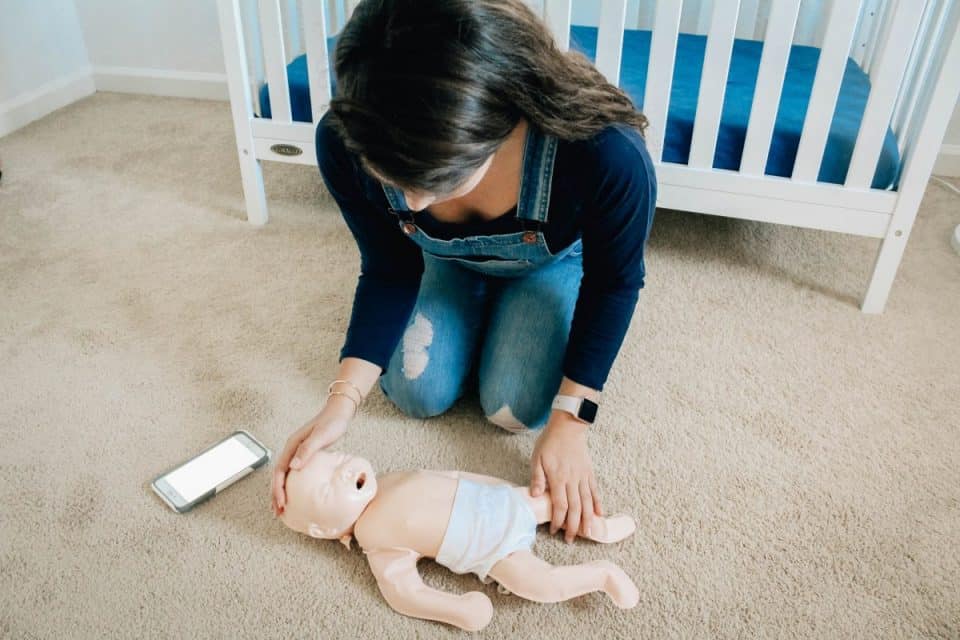
If CPR is successful after initial attempts, still call 9-1-1 to have emergency personnel properly evaluate the child.
3. Open the airway
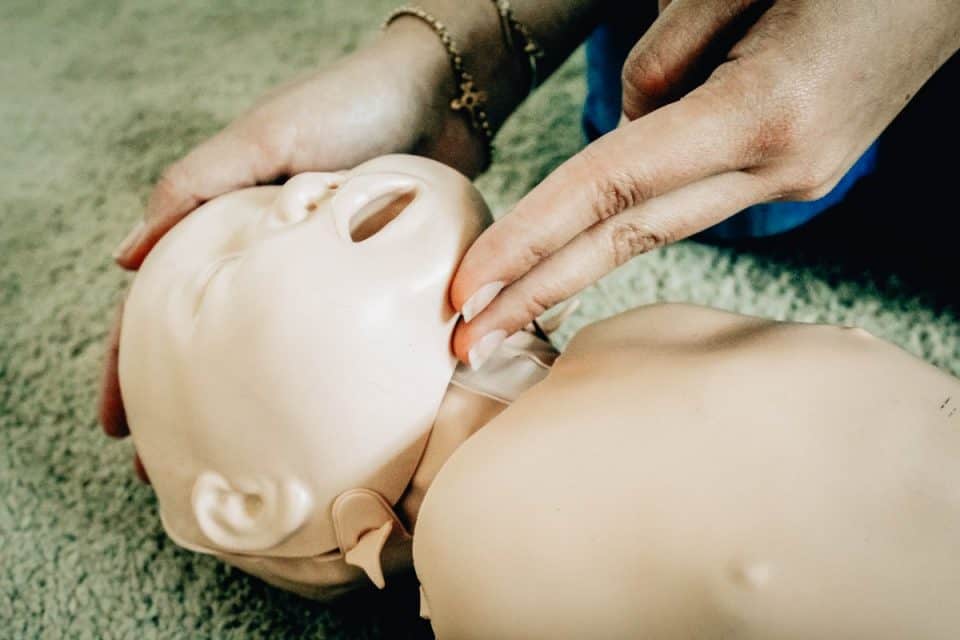
If the infant or child is on their side or face down, roll them over so their face is upward and their head, neck, and back are in a straight line. Make sure to support their head while moving them into the proper position for CPR. Once they are laying flat on their back, gently tilt their head back slightly by placing one hand on their forehead while the other hand uses two fingers to life their chin. The child must be on a firm, flat surface for CPR to work effectively. If they are lying on a mattress or couch, move them to the floor.
4. Check for breathing

Lean over the mouth of the child to assess their breathing. If you do not hear breathing or feel breaths within ten seconds, move on to providing rescue breaths for them. Keep in mind that the child occasionally gasping for breath is not considered breathing.
5. Give rescue breaths
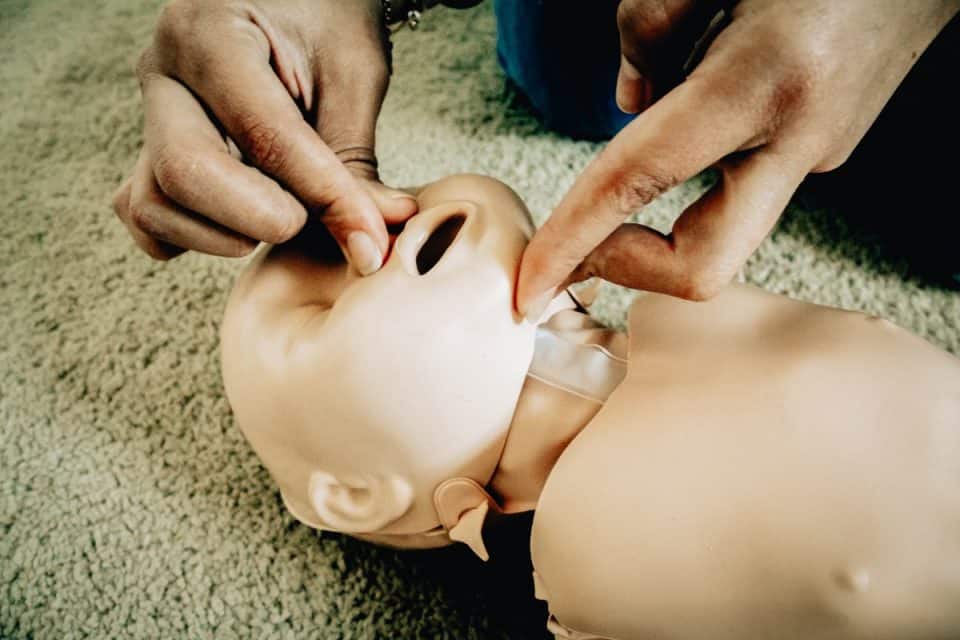
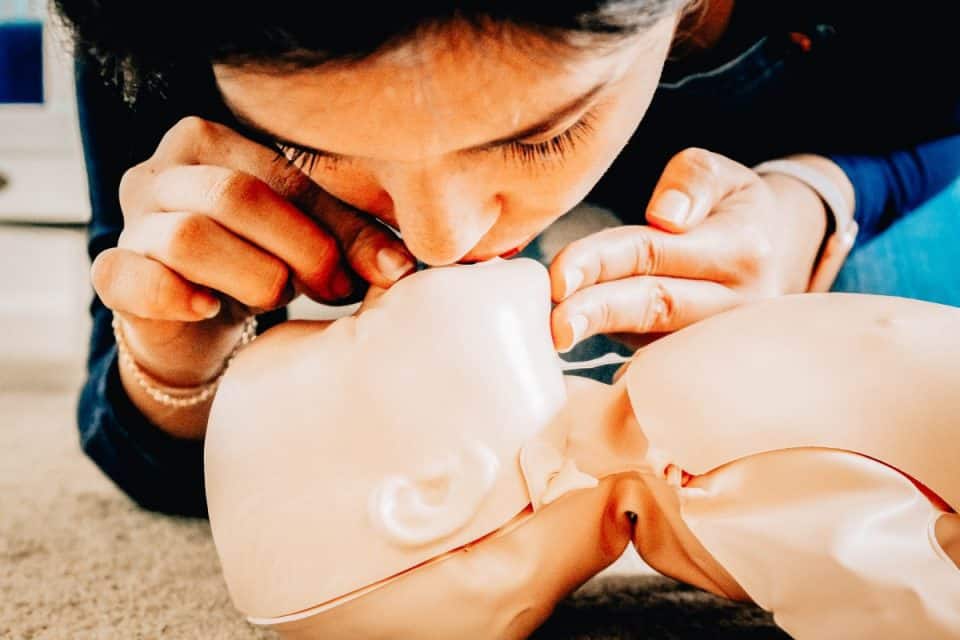
While keeping the airway opened described in step 3, pinch the nose of the child shut and make a seal over the child’s mouth with your mouth and blow for about one second to make the chest clearly rise. Repeat with another rescue breath. If you do not visibly see the chest rise when giving a rescue breath, reposition the head by tilting it again and attempt another rescue breath.
6. Give chest compressions
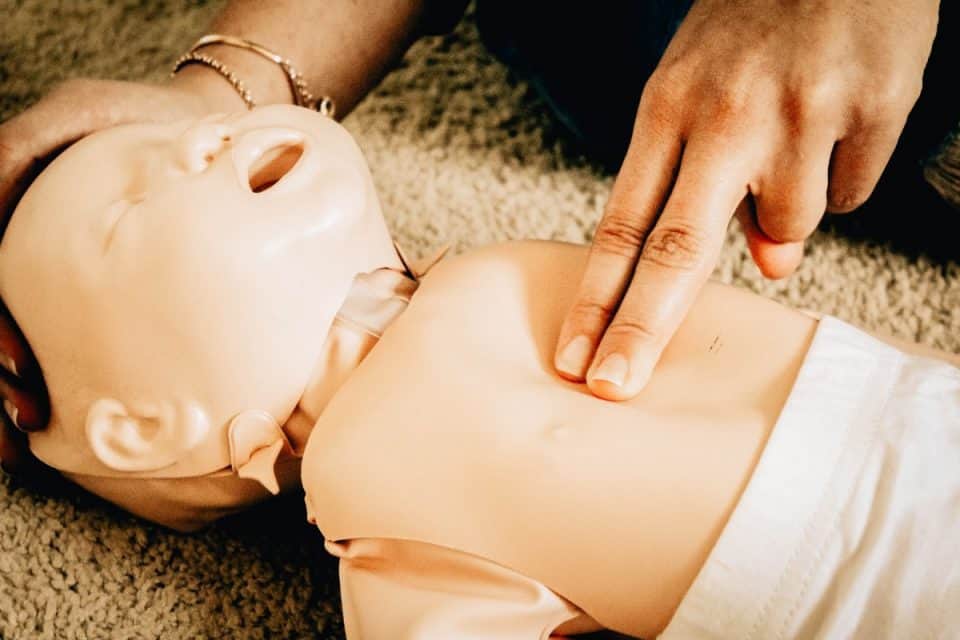
Chest compressions are different for an infant or young child. You do not use the two hand technique that you perform on adults in cardiac arrest. Instead, using your index and middle finger of one hand only, placed in the middle of the infant’s chest, push approximately an inch and a half deep. Do this hard and fast 100 times within a minute.
7. Repeat rescue breaths and chest compressions

Continue the cycle of two rescue breaths followed by 100 chest compressions without stopping while the child is still not breathing. If you are with another person that is familiar with infant CPR, you can allow them to take over if you become exhausted and feel you are not performing CPR effectively. If you decide to give care over to another individual, do so quickly so the CPR process is not interrupted.
8. Continue CPR
Continuous cycles of CPR should not be stopped unless the infant exhibits obvious signs of life such as resuming to breathe, official emergency personnel arrives and assumes care, or an AED (automated external defibrillator) becomes available.
This post is meant for educational purposes only. It is not intended to replace medical advice from your physician, doctor or health care professional. Please read our terms of use for more information.
Source: Pediatric First Aid/CPR/AED
Picture credit: Sasha Staton






































